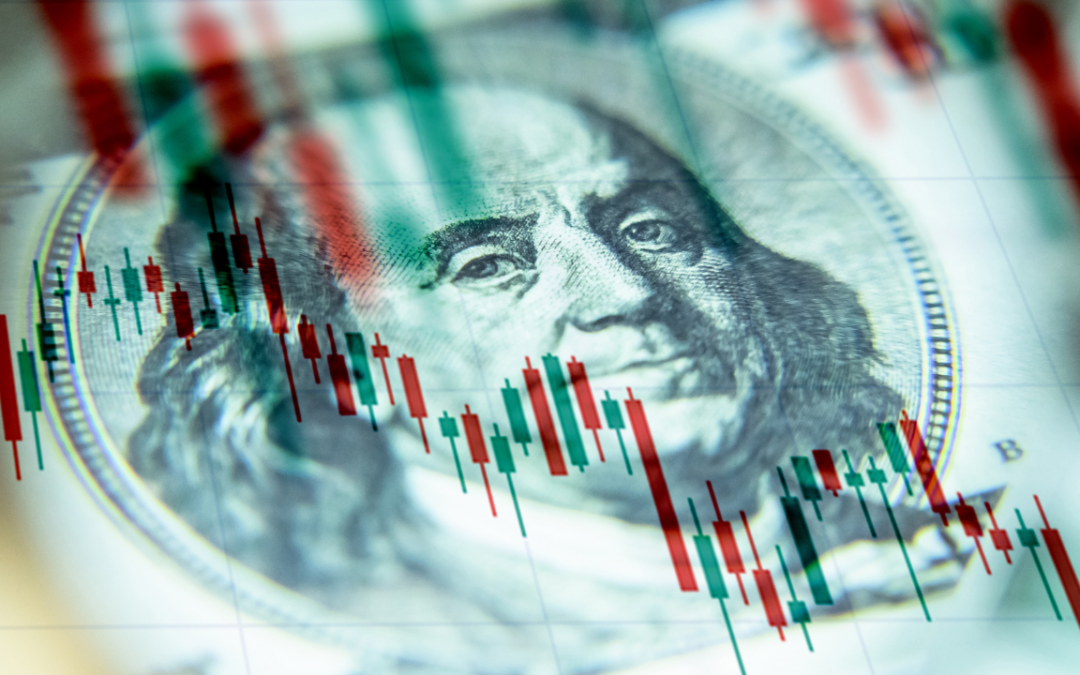TINA is about to face a big test.
TINA – There Is No Alternative – is a popular Wall Street acronym describing a key reason why equities remain so popular. Put simply, TINA says that investors will buy equities because all other investment opportunities are worse.
Over the past few months, TINA has powered a strong recovery of global equity markets. Central bank easing in response to the pandemic-induced recession pushed government and corporate bond yields to historic lows. In all major markets, government bond yields are now well below expected rates of inflation.
Dividend yields on major equity indices, in contrast, are more enticing. The dividend yield on the S&P500, for example, is 1.25% above the prevailing ten-year US Treasury yield. The corresponding yield pick-up in Europe is over 2% (relative to German government debt yields). In the UK, the gap is nearly 4%.
Corporate bonds provide more attractive yields than government bonds, but credit comes with drawbacks, including concerns about whether yields offer sufficient return to compensate investors for potential illiquidity and default risks. Also, high-quality corporate bonds do not have much potential for price appreciation. Meanwhile, other investment vehicles, such as gold, oil or cryptocurrencies, which may periodically offer attractive returns, are too small to be viable alternatives to holding stocks in global portfolios.
Yet TINA is not foolproof. In particular, it is vulnerable to two risks.
First, an asset’s intrinsic value reflects the discounted sum of its expected future cash flows, not just its relative attractiveness to other asset classes. The rent on the apartment I lease to tenants may be worth more as bond yields sink, but if the roof blows off and the tenant leaves, no decline in bond yields will restore its previous value.
Today’s windstorm may be a long-lived Covid-19 pandemic, returning again and again. This could stretch today’s global recession into an extended global stagnation, characterized by very low levels of output and corporate earnings. In that scenario interest rates and bond yields would fall even further, but as corporate profits, cash flows and dividends dry up, equity markets will fall precipitously.
TINA fails when low bond yields reflect economic stagnation and deflation. At that point, the risk of holding stocks overwhelms the benefit of low bond yields, leading to a collapse of equity valuations. Japan, since the early 1990’s, is the classic example of why low or even negative interest rates are not sufficient to boost equity valuations when growth and earnings stagnate.
Second, TINA is fundamentally a momentum strategy. It works so long as it works. But the more investors pile in, the more stocks resemble a bubble, inflated by belief that they can only go up. In the General Theory of Employment, Interest and Money, John Maynard Keynes brilliantly described such behavior as akin to a beauty contest, where the choice of the winner depends on what other observers believe, rather than on some objective criteria. Such ‘games’ create spiraling iterations of decision-making based on the beliefs of others, which divorce choice from value. History is replete with momentum-induced financial bubbles, as well as the carnage they leave in their wake.
The paramount question today is whether we have arrived at the point when it is time to dispatch TINA. That’s impossible to know in Keynesian beauty contest terms alone. Group psychology may be well understood, but it belies prediction. At what point will faith in price action collapse?
Instead, we must appeal to another Keynesian adage: ‘When the facts change, I change my view. What do you do, sir?’
Last Friday’s sharp drop in global equity markets suggests that investors are not so infatuated with TINA that they ignore the fundamentals. Rising rates of US Covid-19 infections and hospitalizations, as well as fresh outbreaks in Europe, are not being ignored by market participants. That’s good news, as it suggests we are not (yet) in a mania phase of blind faith in price action. Still, it will be difficult to navigate markets in the weeks ahead.
Given the relaxation of shutdowns worldwide since early May, the incoming economic data is likely to improve. Output and employment will bounce back in upcoming data releases, for example in the US June employment report – to be released on July 2, 2020. Similarly, the second quarter corporate earnings season, which kicks off in July, could contain positive surprises, for example in the cyclically sensitive retailing, energy or financial sectors.
At the same time, spreading rates of Covid-19 infection in the US and Latin America, alongside the risk that outbreaks in previously contained parts of Europe or Asia might again spike, could easily rattle markets, particularly after their powerful advances since April. Reflecting those uncertainties, this past week not only saw equities dip, but investors also shifted back to stable, large growth stocks and eschewed riskier ‘value’ and ‘cyclical’ companies.
Remaining engaged in equities makes sense, but what is most important is why. Basing decisions on relative returns may work for a time, but it is an inherently risky strategy if pursued without regard to earnings, valuations and other fundamentals. TINA is a temptress, a siren call, which if heeded, draws investors to visions of lucre likely to be dashed on the rocks.
Keynes warned of group think and reminded us of what matters most. Herd investing is risky. And, above all, watch the fundamentals. When they change, be prepared to change your view.



